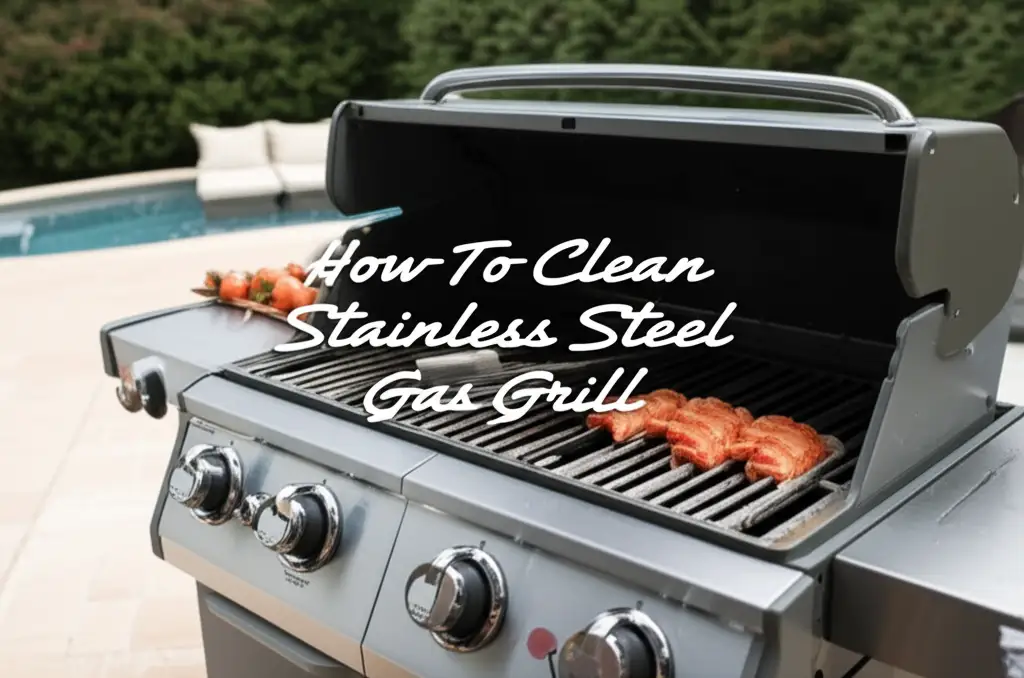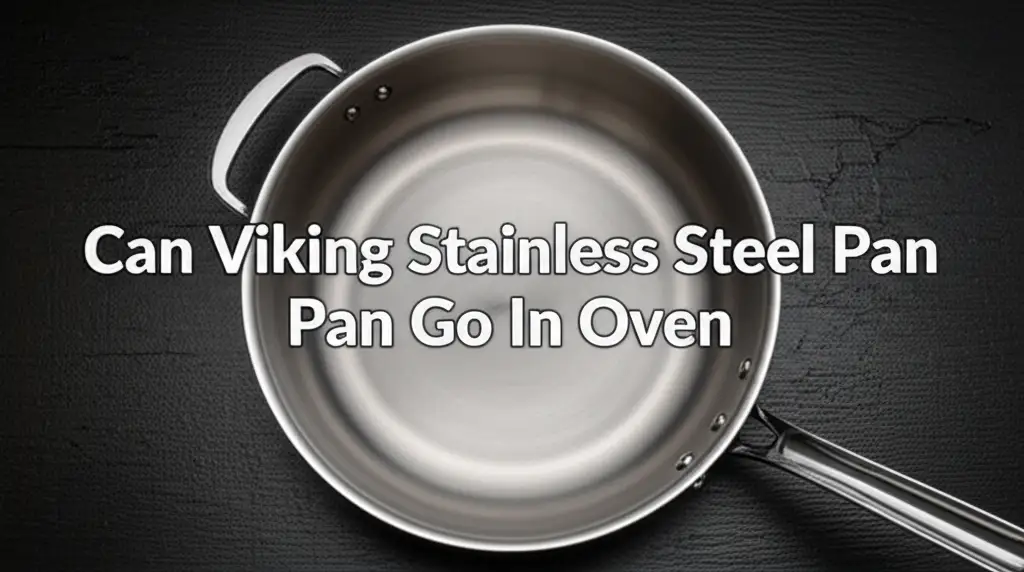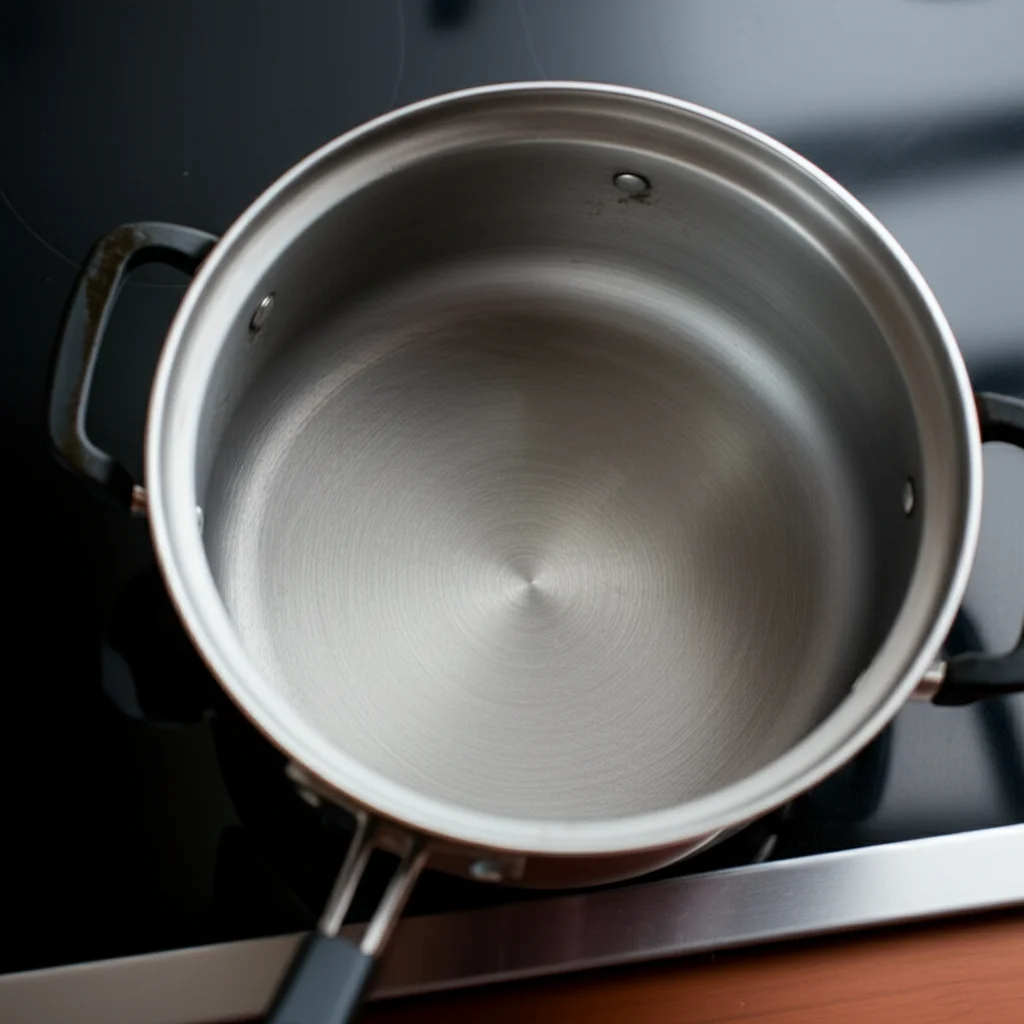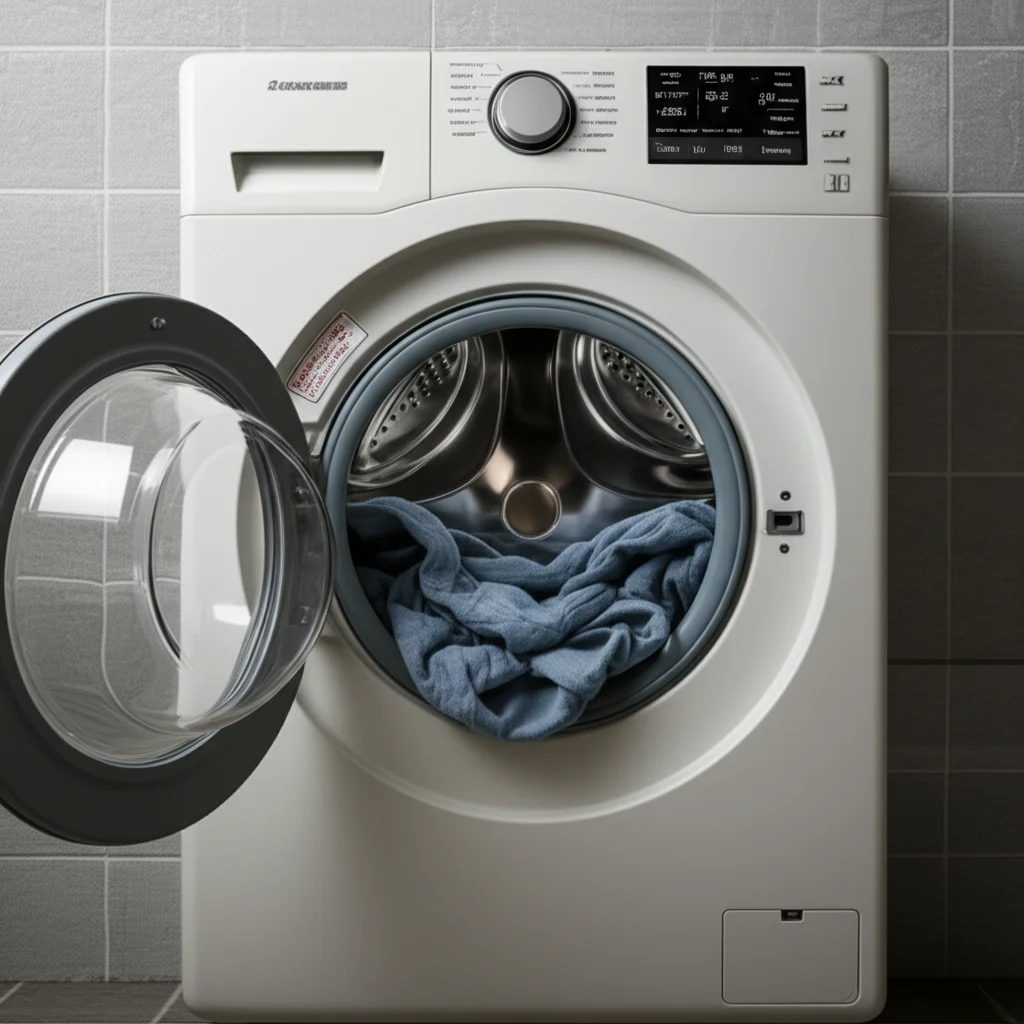· Todd Martin · Grilling · 15 min read
How To Clean Stainless Steel Gas Grill

Sparkling Clean: How to Clean Your Stainless Steel Gas Grill
Summer grilling brings delicious food and good times. A clean grill ensures your food tastes great every time. It also helps your grill last longer. This guide helps you learn how to clean a stainless steel gas grill correctly. I will show you how to tackle everything from greasy grates to the shiny exterior. You will learn the best methods and products for a thorough clean. We will cover grates, burners, interior, and the stainless steel finish. Get ready to make your grill look new again.
Takeaway
- Preheat your grill and brush off loose debris after each use.
- Remove and soak grates, heat tents, and burner covers in hot, soapy water.
- Clean burner ports with a wire brush or toothpick, avoiding water inside tubes.
- Scrape the grill’s firebox interior and empty the grease collection system.
- Clean the stainless steel exterior with a specialized cleaner, wiping with the grain.
- Rinse all components thoroughly and dry them before reassembly.
- Perform routine maintenance to keep your grill in top condition.
To clean a stainless steel gas grill, preheat it to burn off food residue. Turn off the gas and let it cool. Remove grates, heat tents, and burner covers. Clean these parts separately with soap and water or specialized cleaners. Scrape the grill’s interior and empty the grease tray. Finally, clean and polish the stainless steel exterior, wiping with the grain.
Gathering Your Essential Grill Cleaning Tools and Supplies
Before you start cleaning your stainless steel gas grill, prepare your workspace. Having all your tools ready saves time. It makes the cleaning process smoother. I always lay out everything first. This helps avoid interruptions.
You will need a few basic items. First, a good grill brush is essential for scraping grates. Look for one with strong bristles or a scraper tool. A wire brush can damage stainless steel if used on the exterior. For the exterior, soft cloths are better. You will also need a large bucket or tub for soaking parts. This makes removing tough grease much easier.
Dish soap works well for general cleaning. Choose a powerful degreasing soap. For stainless steel surfaces, a dedicated stainless steel cleaner is best. This helps achieve a streak-free shine. You might also want some white vinegar and baking soda. These are natural cleaners and great for tackling stubborn spots. Microfiber cloths are perfect for wiping and polishing stainless steel. They do not leave lint.
Do not forget safety gear. Wear sturdy rubber gloves to protect your hands from grease and chemicals. Safety glasses can protect your eyes from debris, especially when brushing. Having a garden hose nearby is useful for rinsing large parts. A shop vacuum can pick up loose debris inside the firebox.
Gathering these items before you begin helps ensure a safe and efficient cleaning session. You are ready to tackle the dirtiest grill. A well-prepared cleaner is a successful cleaner. It ensures you have everything needed at hand.
Pre-Cleaning Steps: Cooling and Clearing Your Grill Safely
Starting your grill cleaning process safely is important. Before you touch anything, ensure your stainless steel gas grill is completely cool. Many people clean after a cooking session. However, cleaning a hot grill is dangerous. It can cause burns. I always wait for the grill to cool down entirely.
First, turn off the gas supply. Close the main gas valve on your propane tank. If you have a natural gas line, turn off its valve. Disconnect the gas line from the grill if it is safe to do so. This step prevents accidental gas leaks during cleaning. Safety comes first.
Once the grill is cool, open the lid. Look inside for any large food pieces or debris. Remove them by hand or with a plastic scraper. You do not want these bits falling into areas they should not. This initial clearing makes the deeper cleaning easier. I use a paper towel to pick up any bigger crumbs.
Next, remove the grill grates. They are often heavy and might be hot, even if the grill body is cool. Be careful when lifting them out. Set them aside on a protective surface, like old newspapers or a tarp. This protects your patio or deck from grease and grime.
After the grates, remove the heat tents or flame tamers. These are the metal pieces that sit above the burners. They protect the burners from dripping grease. They also help distribute heat evenly. These parts can be very dirty. Place them with the grates for separate cleaning. You are setting the stage for a thorough clean. Taking these steps ensures safety and prepares the grill interior. These initial steps are crucial for effective cleaning.
Deep Cleaning Grill Grates and Heat Tents Effectively
Grill grates take the brunt of the cooking mess. They collect burnt food, grease, and char. Cleaning them well makes a big difference in food taste. It also affects the appearance of your stainless steel grill. My approach starts with a good soak.
First, scrape off loose debris from the grates. Use a sturdy grill brush. Scrape both sides of each grate. Remove as much burnt-on food as possible. This reduces the amount of work needed later. This also prevents small bits from clogging drains.
Now, prepare a soaking solution. Fill a large bucket or tub with very hot water. Add a generous amount of dish soap. You can also add half a cup of baking soda for extra cleaning power. Baking soda helps loosen tough grease. Submerge the grill grates and heat tents completely in this solution. Let them soak for at least 30 minutes. For heavily soiled grates, an overnight soak is better. The hot water and soap loosen the baked-on grime. The baking soda provides an abrasive and deodorizing action.
After soaking, scrub each grate. Use your grill brush or a stiff-bristled brush. You can also use a scrubbing sponge on less stubborn areas. Pay attention to the grates’ corners and edges. These areas often collect the most residue. For very stubborn spots, a paste of baking soda and a little water can help. Apply it, let it sit, then scrub. This method works wonders. For even more help, learn how to clean gas grill grates specifically.
Rinse the grates and heat tents thoroughly with clean water. Make sure no soap residue remains. Any leftover soap can cause unpleasant odors when you cook. Dry them completely before putting them back. Water left on stainless steel can lead to water spots or rust over time. A clean, dry grate is ready for action.
Cleaning Gas Burners and the Firebox Interior
After handling the grates, it is time to focus on the heart of your grill: the burners and firebox. These parts are critical for proper grill function. Keeping them clean helps your grill light easily. It also ensures even heat distribution. I find this step makes a big difference in performance.
First, carefully remove the burner tubes. Most gas grills have burner tubes that lift out. Some might have small screws holding them. Be gentle when removing them. You do not want to bend or damage them. Check the burner ports. These are the small holes along the burner tube where the gas ignites. They can become clogged with grease or rust. Clogged ports lead to uneven flames or weak heating. If you need more help, learn how to clean burners on gas grill.
Use a wire brush to gently brush the outside of the burner tubes. This removes loose rust or debris. For clogged burner ports, use a thin wire or paper clip. Insert it into each port to clear any blockages. Do not use water inside the burner tubes. Water can cause rust inside the tube. It can also interfere with gas flow. Keep them dry. After cleaning, set the burners aside.
Now, look at the firebox interior. This is the main cooking chamber. It collects a lot of grease and charred food particles. Use a plastic scraper or putty knife to scrape down the sides and bottom. Push all the debris towards the bottom opening. Be thorough. This collected debris can cause flare-ups if not removed.
Below the burners, you will find the grease tray or grease management system. This system catches all the drippings. Remove the grease tray. Scrape out any solidified grease or food bits. You might be surprised how much accumulates here. Wash the tray with hot, soapy water. A good degreaser can help if the grease is thick. Ensuring this tray is clean prevents blockages. It also helps clean grease off stainless steel components effectively. Rinse the tray well and dry it. A clean firebox and burner system mean better grilling.
Restoring the Stainless Steel Exterior Shine
The stainless steel exterior of your grill makes it look sleek. However, it can quickly show fingerprints, smudges, and grease. Cleaning it properly keeps your grill looking its best. The key is to wipe with the grain of the stainless steel. Stainless steel has a faint directional pattern. I always check the grain first.
Before applying cleaner, wipe down the exterior with a damp cloth. This removes loose dirt and dust. It prepares the surface for a deeper clean. If there are visible grease spots, you might need a mild degreaser first. Remember to use only products safe for stainless steel. Avoid abrasive cleaners or scouring pads. They can scratch the surface.
Choose a quality stainless steel cleaner. Many cleaners come in spray bottles. Some are creams or wipes. Follow the product instructions. Spray a small amount of cleaner onto a microfiber cloth. Do not spray directly onto the grill surface. This prevents overspray on other parts.
Wipe the stainless steel surface with your damp, cleaner-applied cloth. Always wipe in the direction of the grain. Wiping against the grain can leave streaks or even cause tiny scratches. If you look closely, you can see the grain. It usually runs horizontally or vertically. Work in small sections for better control. This helps ensure even cleaning.
After cleaning, use a separate, clean, dry microfiber cloth. Buff the surface gently. This removes any streaks and enhances the shine. Buffing brings out the natural luster of stainless steel. For persistent fingerprints or water spots, a small amount of white vinegar on a cloth can work. Follow up with the stainless steel cleaner for polish. Regularly cleaning your stainless steel exterior keeps it beautiful. It also protects it from environmental elements.
Tackling Stubborn Stains and Rust on Stainless Steel
Even with regular cleaning, stainless steel can develop stubborn stains or rust spots. These issues require specific attention. Addressing them quickly prevents bigger problems. I have found certain methods work best for these challenges.
For burnt-on food or dark stains, a paste of baking soda and a little water works well. Apply this paste directly to the stain. Let it sit for 15-20 minutes. The baking soda acts as a mild abrasive. It also helps break down the burnt residue. After letting it sit, gently scrub the area with a soft cloth or sponge. Always scrub in the direction of the stainless steel grain. Rinse the area thoroughly with water. Wipe it dry immediately to prevent water spots. This method helps clean stains on stainless steel surfaces.
Rust on stainless steel can be surprising. Stainless steel is rust-resistant, not rust-proof. Rust often occurs from external sources. For example, rust can come from rusty tools or metal particles in the air. For light rust spots, use a soft cloth dipped in white vinegar. Vinegar is a mild acid. It helps dissolve rust. Rub the rusted area gently with the vinegar cloth. Let it sit for a few minutes. Then, scrub with a non-abrasive pad. Rinse well and dry.
For more stubborn rust, you might need a specialized stainless steel rust remover. These products contain stronger chemicals. Always test them in an inconspicuous area first. Follow the product instructions carefully. Apply with a clean cloth. Never use steel wool or harsh abrasive scrubbers. They can scratch the stainless steel surface. This creates small divots where rust can form more easily in the future. Once you remove the rust, apply a stainless steel polish or protector. This adds a protective layer. It helps prevent future rust. It also keeps your grill looking great. Learning how to clean rust off stainless steel extends your grill’s life.
Post-Cleaning Assembly and Regular Maintenance Tips
After all the individual parts are clean, it is time to put your stainless steel gas grill back together. Proper reassembly ensures your grill works correctly. Then, adopting good maintenance habits keeps it clean between deep cleaning sessions. I follow these steps to finish the job and prepare for future cooks.
First, make sure all components are completely dry. This is especially true for the grates and heat tents. Any moisture can lead to rust or corrosion. Place the heat tents or flame tamers back onto their supports. Ensure they are seated correctly over the burners. Next, carefully place the burner tubes back into their positions. Align them with the gas inlets. Double-check that all connections are secure. Finally, put the clean grill grates back in place. They should sit firmly on their supports.
Now, reconnect your gas supply. Slowly turn on the gas valve. Check for any leaks. You can do this by applying a soapy water solution to the connections. Bubbles indicate a leak. If you see bubbles, turn off the gas and tighten the connection. If bubbles persist, call a professional. Once everything is assembled and checked, you can fire up the grill briefly. This helps burn off any remaining residue. It also seasons the grates.
Regular maintenance extends the life of your grill. After every use, preheat your grill for 10-15 minutes. This burns off food residue. Then, use a grill brush to scrape the grates clean. Do this while the grates are still hot. This simple step prevents food from baking onto the grates. It makes future cleaning much easier.
Always clean the exterior of your stainless steel grill after each use. A quick wipe with a damp microfiber cloth removes fingerprints and light smudges. For stubborn spots, use a stainless steel cleaner. Store your grill under a grill cover. A good cover protects it from weather and elements. It keeps the stainless steel looking new. By following these tips, your gas grill will stay in excellent condition. Regular care saves you time and effort in the long run.
FAQ Section
How often should I clean my stainless steel gas grill?
You should brush the grates after every use. A light exterior wipe-down is also good after each cook. Perform a thorough deep clean of your entire stainless steel gas grill at least twice a year. For frequent grillers, a deep clean once every three months is better. This schedule keeps your grill performing well and looking good.
Can I use oven cleaner on stainless steel grill grates?
Using oven cleaner on stainless steel grill grates is not recommended. Oven cleaners contain harsh chemicals. These chemicals can damage the stainless steel finish. They may also leave a residue that is unsafe for cooking surfaces. Stick to hot soapy water, baking soda, or specialized grill cleaners designed for grates.
What causes rust on stainless steel grills?
Rust on stainless steel grills often comes from external sources. It happens when carbon steel particles, like from a wire brush or steel wool, get embedded in the surface. Chlorine from cleaning products or salt in coastal air can also cause rust. Water left to dry on the surface can also lead to water spots that look like rust.
How do I prevent grease fires in my gas grill?
Regularly cleaning your grill’s interior and grease management system prevents grease fires. Make sure to scrape the firebox. Empty and clean the grease tray often. Also, avoid cooking excessively fatty foods directly on high heat for long periods. A clean grill is a safer grill.
Is it safe to use a wire brush on stainless steel grates?
Using a wire brush on stainless steel grill grates is generally safe. However, ensure the brush wires are secure. Old, shedding wire brushes can leave bristles on grates. These bristles can stick to food and be dangerous if ingested. Consider a bristle-free brush or a heavy-duty nylon brush as a safer alternative.
Conclusion
Cleaning your stainless steel gas grill is an important task. It keeps your grill looking good. It also ensures it works correctly and safely. I have walked you through each step, from gathering tools to deep cleaning every part. You learned how to tackle grates, burners, and the shiny exterior. We also covered handling stubborn stains and rust.
A clean grill means better-tasting food. It also extends the life of your investment. Regular maintenance prevents grime buildup. It helps you avoid bigger cleaning jobs later. Taking the time to care for your grill pays off. You will enjoy many more years of delicious outdoor cooking.
Now you have the knowledge and steps to make your stainless steel gas grill sparkle. Go ahead and put these tips into action. Enjoy the satisfaction of a perfectly clean grill. Happy grilling!





